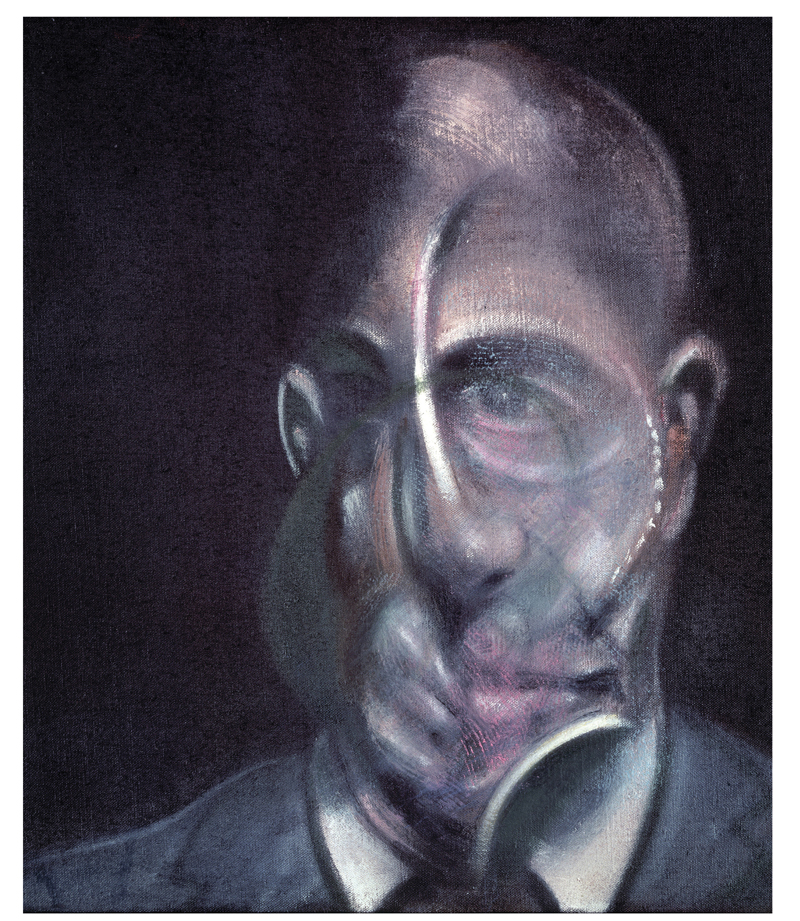Whitehot Magazine
April 2024
"The Best Art In The World"
"The Best Art In The World"
April 2024
Francis Bacon Retrospective at the Grimaldi Forum

Francis Bacon Studies of the Human Body, 1970 Oil on canvas 198 x 147,5 cm Private Collection, Courtesy Ordovas © The Estate of Francis Bacon. All rights reserved, DACS 2016
Francis Bacon Retrospective, the Grimaldi Forum, Monaco
2 July and runs until 4 September.
By SHANA BETH MASON, JUL. 2016
For all of its imagined glamour, Monaco doesn’t offer much in terms of art galleries or institutions. Secondary market work does find its way into tiny storefronts (dwarfed by the incessant number of real estate and private yacht sales firms), but the principality doesn’t have a national or state-owned art collection open to the public. So its surprising that one of, if not the, most comprehensive exhibitions by an institutionally-adored artist is posited in the tiny city-state.
Francis Bacon: Monaco and French Culture reads like a “Bacon For Dummies” class. It is curated by Bacon’s longtime friend and art historian Martin Harrison and will travel to the Guggenheim Bilbao in September, where the focus will shift towards the artist’s relationship with Spain as a cultural haven. It is presented chronologically, from his first documented work in 1929 to a never-before seen work (among his last) in 1991. Bacon’s canvases are interspersed with candid photographs of him, his family, his entourage and, in rare glimpses, his tortured lovers. His movement from abstraction to figurative studies is perceivable to the naked eye. Had you never encountered Bacon before, this exhibition would be your cheat sheet. Each wall text enhances obvious visual parallels Bacon created between his works and those of Tolouse-Lautrec, Soutine, Guilllame and Velásquez. How about some extra credit? Original works from the aforementioned artists are all placed alongside their respective Bacon counterparts.
 Francis Bacon Head VI, 1949 Oil on canvas 93,2 x 76,5 cm Arts Council Collec:on, Southbank Centre, London © The Estate of Francis Bacon. All rights
Francis Bacon Head VI, 1949 Oil on canvas 93,2 x 76,5 cm Arts Council Collec:on, Southbank Centre, London © The Estate of Francis Bacon. All rights
Initiating a new audience to Bacon and contextualising his complex relationships with those around him seem to be the primary objectives of this exercise. Harrison appears to have taken no risks in the show’s physical presentation or its intellectual thesis. The viewer is meant to proverbially “pay homage” to the major works on display; often hung in complete isolation, dimly lit from above, and in the case of Studies of the Human Body (1970), possessing a sweeping circular mini-stairway leading up to the “altar” where the work hangs. A strategically-placed bench in front permits further adoration, and in one eerie moment I swore that the overhead lights just ever-so-slightly swung to and fro over the triptych; the drama exponentially heightened.
 Francis Bacon Watercolour, 1929 Pencil, black ink, watercolor and gouache 21 x 13 cm MB Art Collec:on © The Estate of Francis Bacon. All rights reserved
Francis Bacon Watercolour, 1929 Pencil, black ink, watercolor and gouache 21 x 13 cm MB Art Collec:on © The Estate of Francis Bacon. All rights reserved
I had been taught to be aware (and wary) of this kind of exultation of contemporary art, in that regression is inevitably triggered; if Duchamp aimed to destroy the “ghost in the machine” of art, signifying that art was nominal and not wedded to history or religion, then this exhibition would have been his worst nightmare. But, if an exhibition can serve as a teaching device or a bridge to the general public, rather than a repeated gesture of condescension in expecting that its viewers immediately apprehend all subject and context related to what’s on view, then it can be successful, too. This thoroughly-researched exhibition was the latter. It was “textbook”, but inspired. It was visually “predictable”, but no less breathtaking in scope and scale.
 Francis Bacon Fragment of a Crucifixion, 1950 Oil and cowon wool on canvas 158,4 x 127,4 cm Collec:on Van Abbemuseum, Eindhoven © The Estate of Francis Bacon. All rights
Francis Bacon Fragment of a Crucifixion, 1950 Oil and cowon wool on canvas 158,4 x 127,4 cm Collec:on Van Abbemuseum, Eindhoven © The Estate of Francis Bacon. All rights
It didn’t matter that French culture or Monaco wasn’t blatantly advertised, because when you’re presented with some of Francis Bacon’s most outstanding works in tandem with Impressionist gems, none of the lofty preoccupations of the “art world” seem to take hold. Hands-down, this was Bacon at his best.
Francis Bacon: Monaco and French Culture opened at the Grimaldi Forum in Monaco on 2 July and runs until 4 September. It travels to the Guggenheim Bilbao from September 2016 to January 2017, where the focus will switch to Bacon’s relationship to Spain and Spanish culture. WM
 Francis Bacon Study of a Dog, 1952 Oil on canvas 198,1 x 137,2 cm Presented by Eric Hall 1952 Tate, London © Tate, London 2016
Francis Bacon Study of a Dog, 1952 Oil on canvas 198,1 x 137,2 cm Presented by Eric Hall 1952 Tate, London © Tate, London 2016
 Francis Bacon Sea, 1953 Oil on canvas 155 x 117,5 cm The Estate of Francis Bacon © The Estate of Francis Bacon. All rights reserved, DACS 2016
Francis Bacon Sea, 1953 Oil on canvas 155 x 117,5 cm The Estate of Francis Bacon © The Estate of Francis Bacon. All rights reserved, DACS 2016
 Francis Bacon Study for a Portrait of Van Gogh, 1957 Oil on canvas 198,1 x 142,2 cm Arts Council Collection,
Francis Bacon Study for a Portrait of Van Gogh, 1957 Oil on canvas 198,1 x 142,2 cm Arts Council Collection,
Southbank Centre, London © The Estate of Francis Bacon.
 Francis Bacon Lying Figure, 1958 Oil on canvas 153,5 x 119,5 cm Kunstmuseum Bochum, Germany © The Estate of Francis Bacon. All rights reserved, DACS 2016. Photo: Hugo Maertens
Francis Bacon Lying Figure, 1958 Oil on canvas 153,5 x 119,5 cm Kunstmuseum Bochum, Germany © The Estate of Francis Bacon. All rights reserved, DACS 2016. Photo: Hugo Maertens
 Francis Bacon Turning Figure, 1962 Oil on canvas 198 x 144,5 cm Private Collection © The Estate of Francis Bacon. All rights reserved, DACS 2016.
Francis Bacon Turning Figure, 1962 Oil on canvas 198 x 144,5 cm Private Collection © The Estate of Francis Bacon. All rights reserved, DACS 2016.
 Francis Bacon Portrait of a Man Walking Down Steps, 1972 Oil on canvas 198 x 147,5 cm Private Collection © The Estate of Francis Bacon. All rights reserved, DACS 2016
Francis Bacon Portrait of a Man Walking Down Steps, 1972 Oil on canvas 198 x 147,5 cm Private Collection © The Estate of Francis Bacon. All rights reserved, DACS 2016
 Francis Bacon Studies of the Human Body, 1970 Oil on canvas 198 x 150 cm Private Collection
Francis Bacon Studies of the Human Body, 1970 Oil on canvas 198 x 150 cm Private Collection
© The Estate of Francis Bacon. All rights reserved, DACS 2016
 Francis Bacon Portrait of Michel Leiris, 1976 Huile sur toile 35,5 x 30,5 cm Donation Louise et Michel Leiris, 1984 Centre Pompidou, Paris - Musée na:onal d'art moderne/Centre de création industrielle © The Estate of Francis Bacon. All rights reserved, DACS 2016.
Francis Bacon Portrait of Michel Leiris, 1976 Huile sur toile 35,5 x 30,5 cm Donation Louise et Michel Leiris, 1984 Centre Pompidou, Paris - Musée na:onal d'art moderne/Centre de création industrielle © The Estate of Francis Bacon. All rights reserved, DACS 2016.

Francis Bacon Study of a Bull, 1991 Oil on canvas 198 x 147,5 cm Private Collection © The Estate of Francis Bacon.
All rights reserved, DACS 2016. Photo: Prudence Cuming Associates Ltd

Shana Beth Mason
Shana Beth Mason is a critic based in London, UK. Contributions include Art in America, ArtVoices Magazine, FlashArt International, InstallationMag (Los Angeles), Kunstforum.as (Oslo), The Brooklyn Rail, The Miami Rail, SFAQ, and thisistomorrow.info (London).
view all articles from this author








